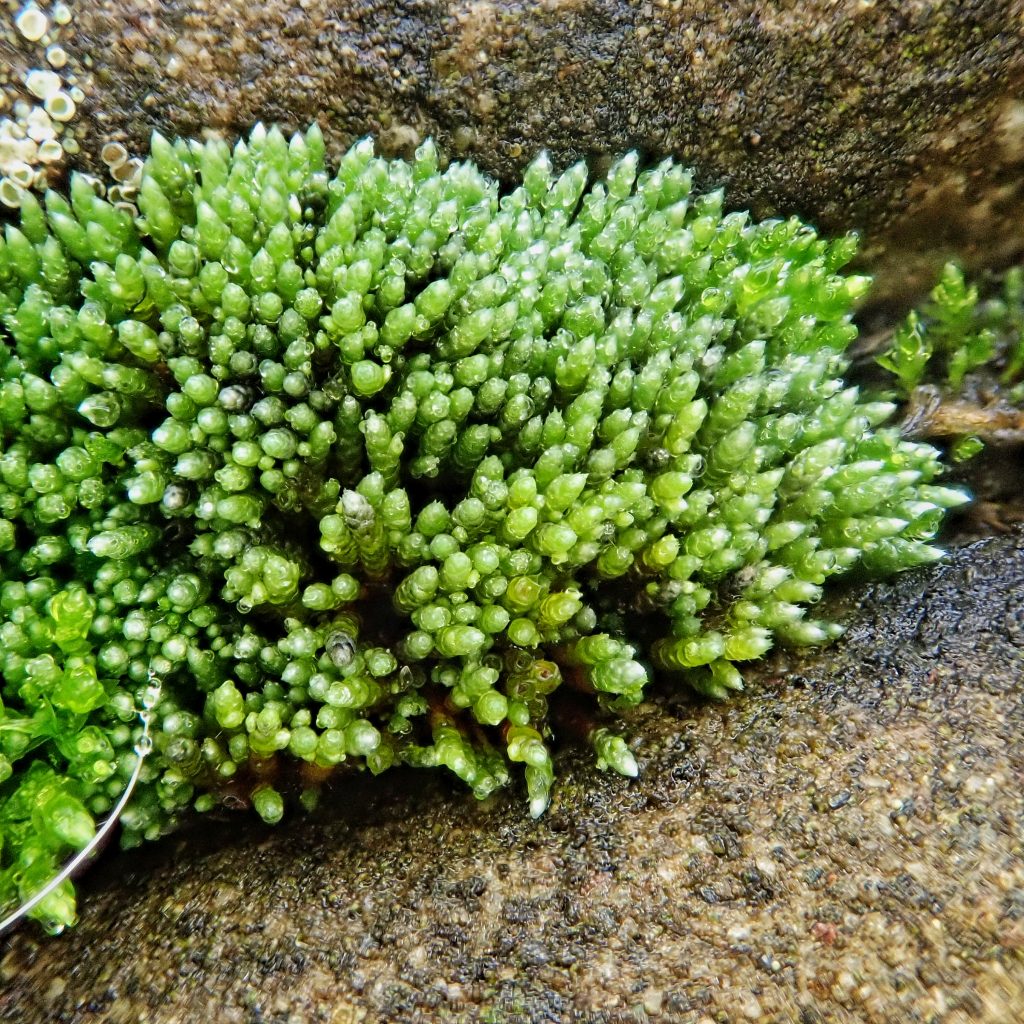
When I went to write a profile while killing time at work today, I realized I didn’t have a bombproof identification on any of my recent photographs. But that was no problem because I’ve been wanting to talk about Bryum argenteum, and as expected, there were multiple clumps of it within twenty feet of my van.
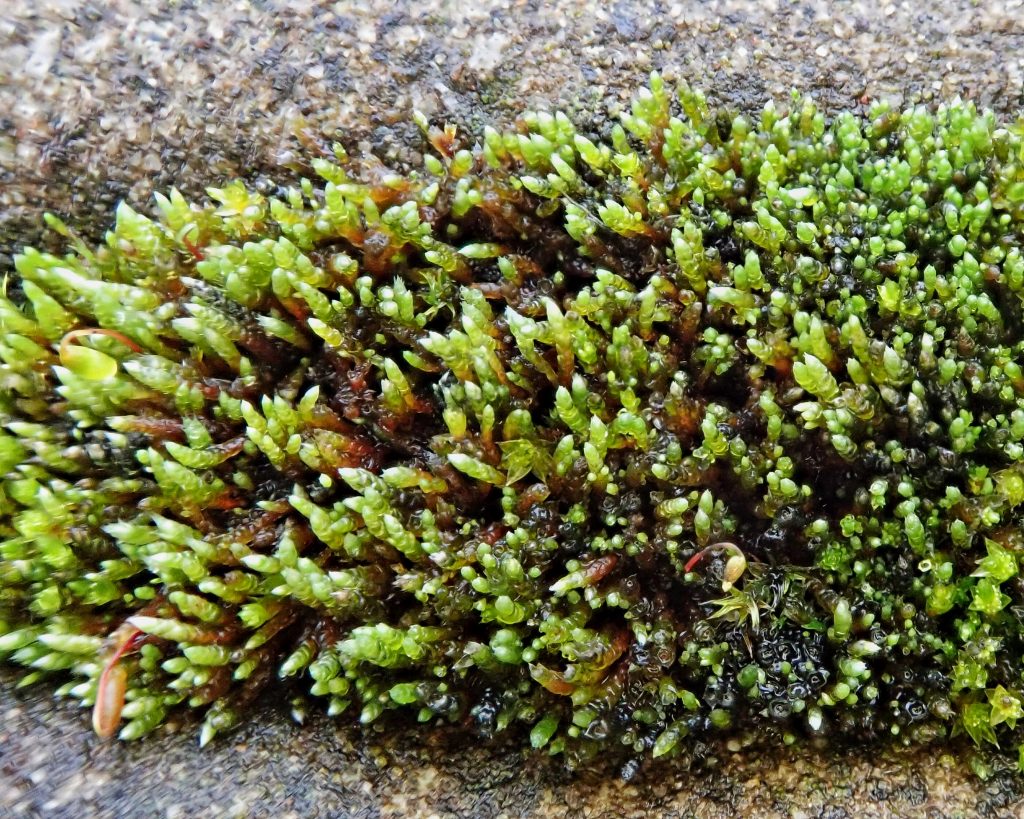
This is a very pretty, and very distinctive moss, with a cosmopolitan distribution. Robin Wall Kimmerer states, in her book ‘Gathering moss’, that “I have never traveled without encountering B. argenteum. It was on the tarmac in New York City, and on the tiled roof outside my window in Quito the next morning.” And I have found that there is almost nowhere in a relatively open urban environment where I can’t find some Bryum argenteum.
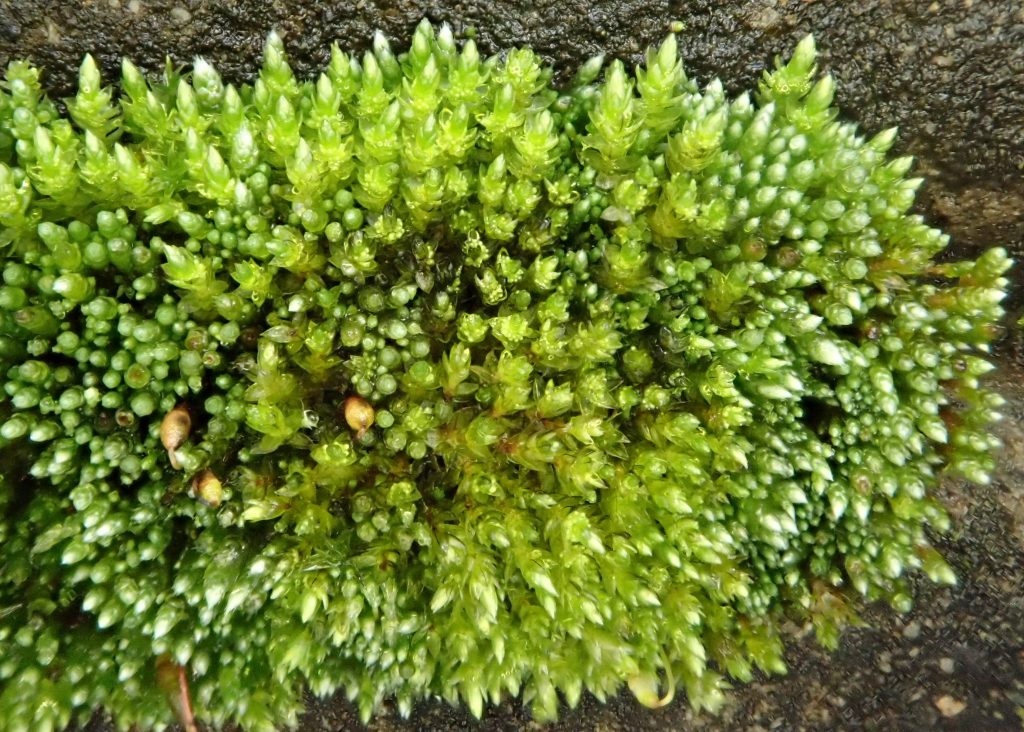
There are many common names for this species, and my favorite is silvery bryum. It has an elegance and simplicity that fits this plant. And it can be startlingly silvery! This is the result of a lack of chlorophyll in the distal part of the leaf, and is thought to protect the plant in its exposed habitat by reflecting heat and solar radiation.
Next time you find yourself walking on a sidewalk or across a parking lot or really anywhere you may be afoot, look down and see if you can catch a glimpse of this hardy, tenacious, and beautiful little moss. Then get down to its level and examine its exquuisite and tiny form. You will be glad you did!
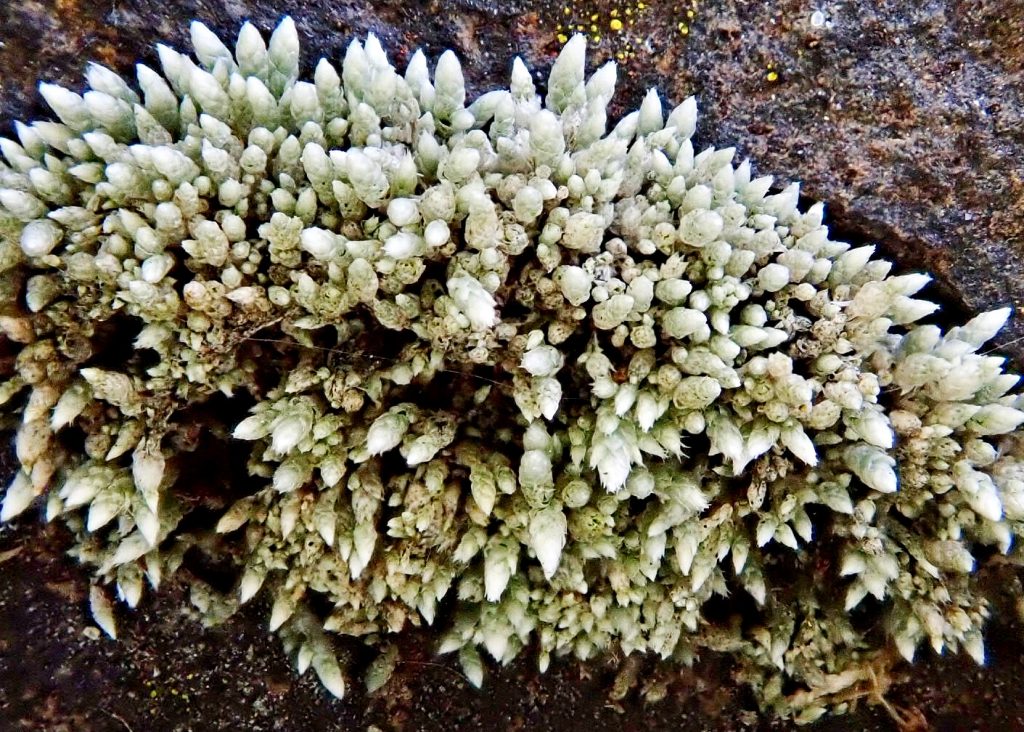
Description– Small (shoots can be up to 20mm, but are usually about 5mm tall; leaves are usually 1mm or less long), bright green to greenish white to silvery, julaceous (round and tightly overlapping, like a catkin) shoots; gets more silvery the drier it becomes, because when it is fully hydrated it reflects the chlorophyll in the surrounding leaves, though the upper part of leaf lacks chlorophyll; extended, hyaline (clear or translucent white), sharply pointed leaf apexes, but without true awns; forms small turfs.
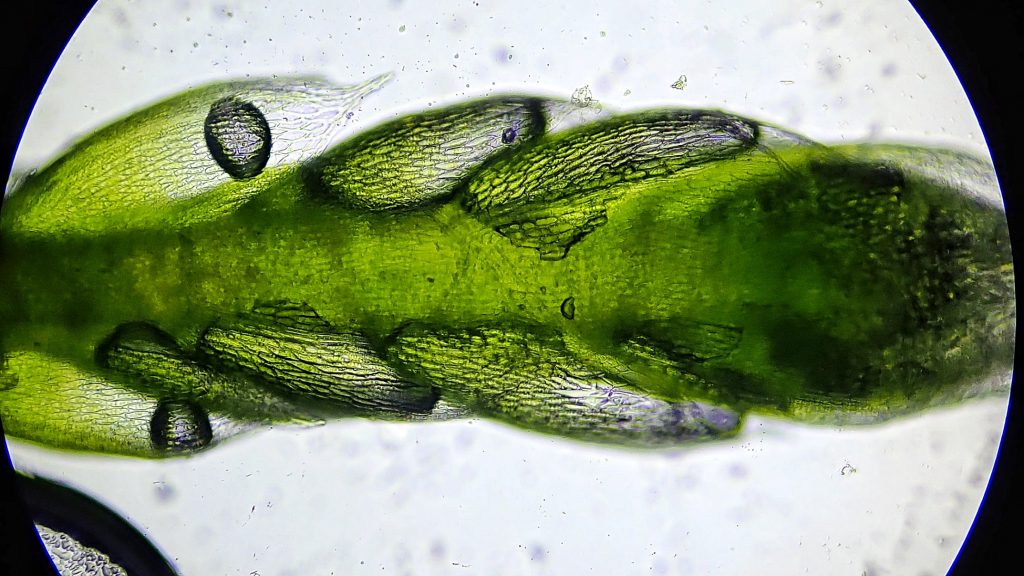
Similar species– Nothing else in our region really looks like this up close, although some species with short hyaline awns may fool one from a distance, especially if the leaves fold in to the stem when dry.
Habitat-On soil and soil over rock; frequently found in sidewalk and asphalt cracks, and on roofs; more common in urban areas because it is highly pollution resistant, but also found in natural locations, especially in high nitrogen areas like bird rookeries and around animal dens; found in sunny, open areas, from low to high elevations.
Range-Cosmopolitan; found throughout our region, especially in urban environments.
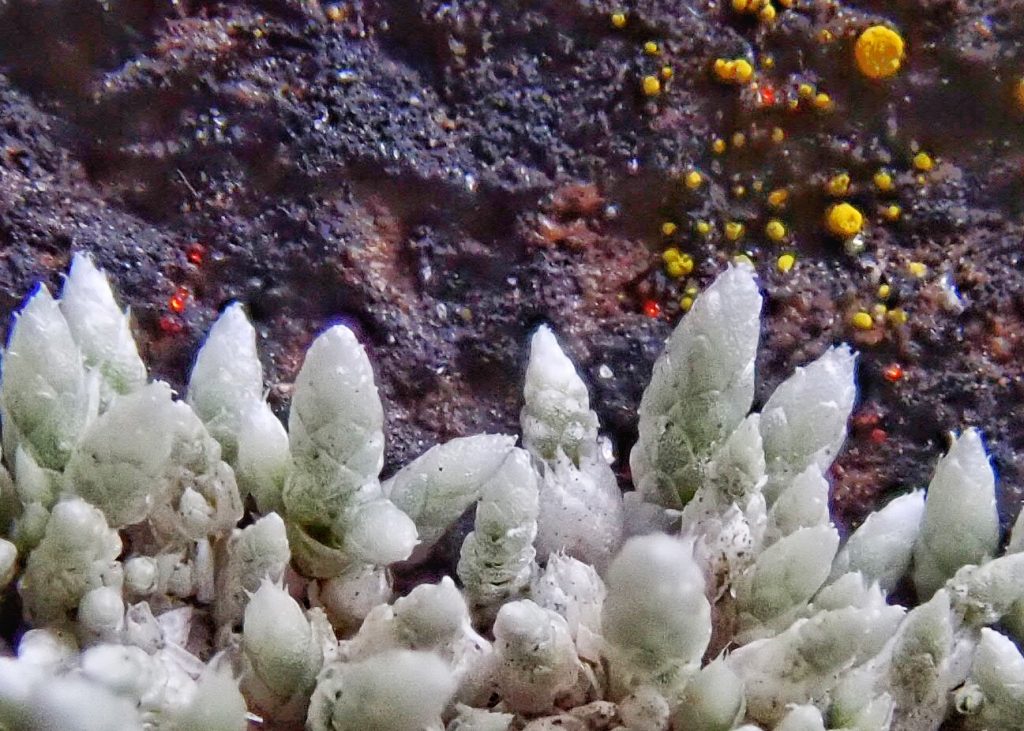
Reproductive timing– Spring and summer
Eaten by– Oratabid mites are known to eat this species, although mostly when it is in its very first growth stages (protonema)
Etymology of names–Bryum is from an Ancient Greek word for moss. The specific epithet argenteum is also from Greek and means silver, a reference to the silvery white color of shoot tips and dry shoots.
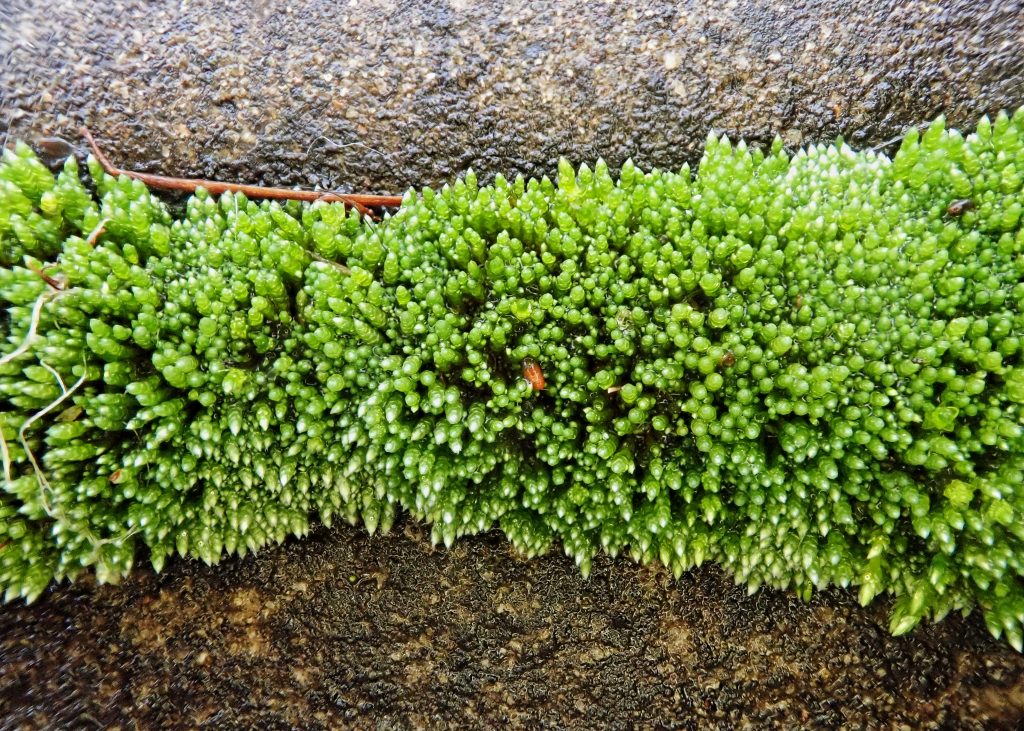
http://beta.floranorthamerica.org/Bryum_argenteum
http://linnet.geog.ubc.ca/Atlas/Atlas.aspx?sciname=Bryum%20argenteum
https://www.illinoiswildflowers.info/mosses/plants/silver_moss.html
http://beta.floranorthamerica.org/Bryum_argenteum
https://www.fs.fed.us/wildflowers/plant-of-the-week/bryum_argenteum.shtml
https://websites.rbge.org.uk/bbs/activities/mosses/Bryum%20argenteum.pdf
http://www.efloras.org/florataxon.aspx?flora_id=1&taxon_id=200001406
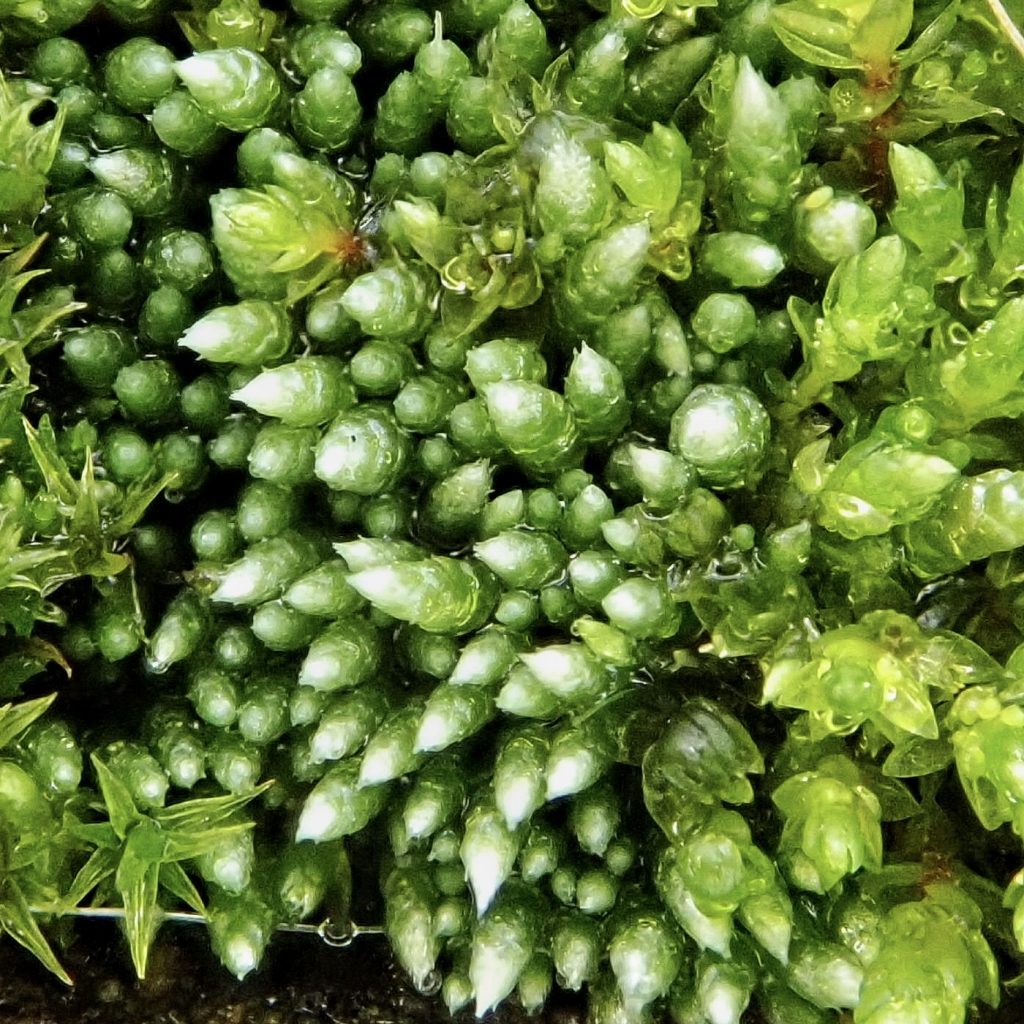
So thorough and informative. I have a fledgling FB page where I upload images and attempt identifications. I have one very old, poor quality book to use for ID. Are there any volumes available for the novice?
Common mosses of Western Oregon and Washington (McCune/Hutten) is a very good beginning book. Also, the Flora of North America links I always post with mosses are very good, but highly technical. Good luck!
Also, at the end of every post (between the last photo and the comments) there is a section called ‘posted in’. If you tap on ‘Bryophyta (Mosses)’ it will pull up every moss post I’ve made. Eventually that feature will function as a de facto field guide, but so far I don’t have very many that I’ve profiled. Maybe 12-15
Enjoyed reading this very much! ☺️